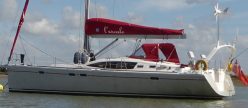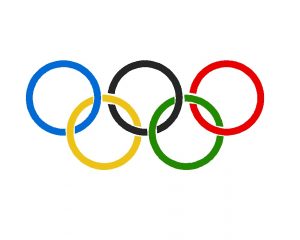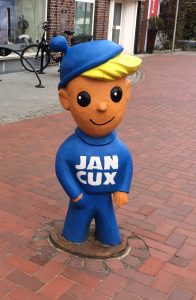Friday 20 April
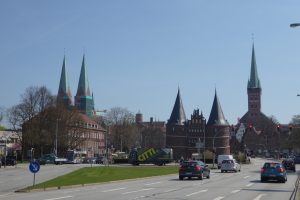 Yet another beautiful sunny day saw my crew off on a trip inland to visit Lűbeck, the ancient capital of the Hanseatic League. [Wikipedia has a fascinating explanation of this mediaeval empire of trade and politics, that extended from the Eastern Baltic through
Yet another beautiful sunny day saw my crew off on a trip inland to visit Lűbeck, the ancient capital of the Hanseatic League. [Wikipedia has a fascinating explanation of this mediaeval empire of trade and politics, that extended from the Eastern Baltic through 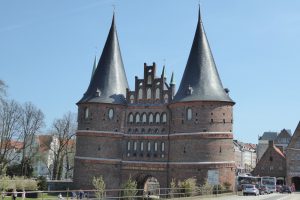 Northern Europe to the East of England.] They got chatting to a lovely lady who was obviously proud of her city, and saved them a trip to the Tourist Information Shop by explaining the ‘must see’ attractions of this pretty town on the river.
Northern Europe to the East of England.] They got chatting to a lovely lady who was obviously proud of her city, and saved them a trip to the Tourist Information Shop by explaining the ‘must see’ attractions of this pretty town on the river.
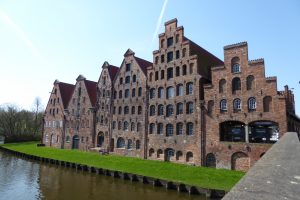 After a picnic lunch they followed her advice and visited the cool painted interior of the Marienkirche, a huge brick-built Gothic church. It was completely destroyed during the night before Palm Sunday in 1942, in retaliation for the bombing of Coventry Cathedral, and, like much of the city, has been painstakingly reconstructed. Two huge bells lie twisted and crumpled where they fell at the foot of the South Spire, a poignant reminder of the pain and futility of war. A large organ clings to the wall beside the West window, almost the only stained glass in the building, and the furniture is a curious juxtaposition of traditional and very modern, especially in the mix of choir stalls in a side chapel and the chancel. There is also an intriguing astronomical clock.
After a picnic lunch they followed her advice and visited the cool painted interior of the Marienkirche, a huge brick-built Gothic church. It was completely destroyed during the night before Palm Sunday in 1942, in retaliation for the bombing of Coventry Cathedral, and, like much of the city, has been painstakingly reconstructed. Two huge bells lie twisted and crumpled where they fell at the foot of the South Spire, a poignant reminder of the pain and futility of war. A large organ clings to the wall beside the West window, almost the only stained glass in the building, and the furniture is a curious juxtaposition of traditional and very modern, especially in the mix of choir stalls in a side chapel and the chancel. There is also an intriguing astronomical clock.
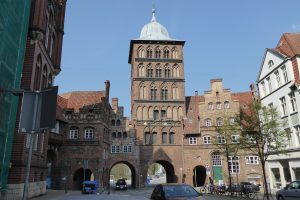 Glad to return to the warm sunshine, my crew wandered an area of streets laid to a grid pattern, among which narrow alleyways lead to courtyards containing tiny mews houses. Their ‘guide’ had explained that migrant workers flooded into Lűbeck during its heyday, and accommodation soon became scarce, so these dwellings were erected anywhere space could be squeezed. It was a privilege to discover these charming hidden cottages.
Glad to return to the warm sunshine, my crew wandered an area of streets laid to a grid pattern, among which narrow alleyways lead to courtyards containing tiny mews houses. Their ‘guide’ had explained that migrant workers flooded into Lűbeck during its heyday, and accommodation soon became scarce, so these dwellings were erected anywhere space could be squeezed. It was a privilege to discover these charming hidden cottages.
